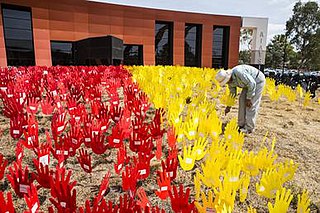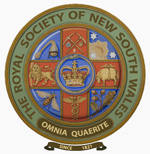Country
In Norman Tindale's estimation, the Kunggara's tribal territory covere some 1,900 square miles (4,900 km2), centered on the Staaten River and running south to the Smithburne River and Delta Downs. The limits of their inland extension lay around Stirling and Lotus Vale.

Norman Barnett Tindale AO was an Australian anthropologist, archaeologist, entomologist and ethnologist.

The Staaten River is a river located in Far North Queensland, Australia.

Delta Downs Station also known as Morr Morr is a pastoral lease that currently operates as a cattle station in Queensland.
Neighbouring tribes were the Maikulan and Maijabi.
The Maikulan were an indigenous Australian people of the state of Queensland. They have sometimes been confused with the Maithakari.
The Maijabi (Mayi-Yapi) were an indigenous Australian people of the state of Queensland.
This page is based on this
Wikipedia article Text is available under the
CC BY-SA 4.0 license; additional terms may apply.
Images, videos and audio are available under their respective licenses.
The Umpila are an Indigenous Australian people of the eastern Cape York Peninsula in northern Queensland. The majority of the remnant of the Umpila now live in Lockhart.
The Totj were an indigenous Australian people of far northern Queensland.
The Mutumui were an indigenous Australian people of northern Queensland.
The Unjadi (Unyadi) were an indigenous Australian people of the Cape York Peninsula of northern Queensland.
The Lotiga, also known as the Okara, were an indigenous Australian people of the Cape York Peninsula of North Queensland.
The Atjinuri were an indigenous Australian people of the Cape York Peninsula of Queensland.
The Yeidji, otherwise commonly known as the Gwini, are an indigenous Australian people of the Kimberley area of Western Australia.
The Araba were an indigenous Australian people of Queensland.
The Ngathokudi (Ngadhugudi) were an indigenous Australian people of the state of Queensland. Their language was possibly a dialect of Uradhi.
The Wakara or Wakura were an indigenous Australian people of the state of Queensland.
The Maikathari (Mayi-Thakurti) were an indigenous Australian people of the state of Queensland.
The Kareldi were one or two indigenous Australian people of the state of Queensland. There were two groups that went by this name, the Garandi (Karandi) and the Kuthant. It's not clear if they constituted a single people or spoke the same language.
The Laia were an indigenous Australian people of the state of Queensland.
The Wik Paach or Wikapatja were an indigenous Australian people of the Cape York Peninsula of northern Queensland.
The Yungkurara were an indigenous Australian people of the state of Queensland.
The Ngundjan (Ogh-Undjan) were an indigenous Australian people of the state of Queensland.
The Kokomini (Gugumini) are reported to have been an indigenous Australian people of the state of Queensland, though some indications suggest the term may refer to a loose confederation of tribal groups.
The Yindjilandji are an indigenous Australian people of the Northern Territory.






